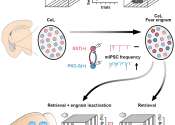Mouse study illuminates how fearful memories form
A newly discovered mechanism of fear memory formation in mouse brains may help reduce the negative impact of fear and provide new treatment methods for post-traumatic stress disorder (PTSD) in the future , according to a ...
Aug 6, 2024
0
0









